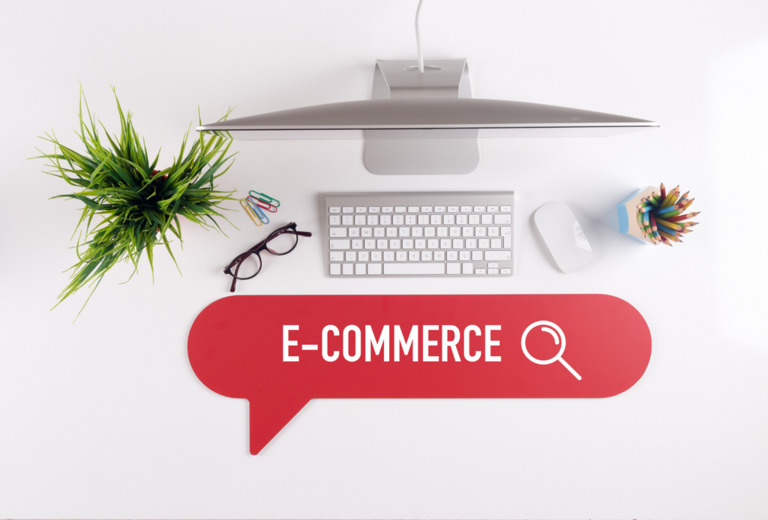How to create an eCommerce website?
It is a prediction hard to negate, but eCommerce is projected to cross over $2 trillion in the next few years. It is deemed to be the fastest-growing industry and a valuable industry in the world. Thus, building your eCommerce website is your first step towards online commerce.
Food for thought – shopping online, effortless checkout, and then conveniently have that pair of denim, mobile phone, or even a customised PC shipped directly to your front porch, you may think life is so easy. As a web and apps design agency founder, I have helped various brands in their sales growth through eCommerce. This pushed me to write a blog on how to effectively create an eCommerce website, so you can understand the process and steps involved in making your eCommerce business nothing to something.

Following is the list of steps to build an eCommerce website
1. Getting a domain name and web hosting
This is relatively easy. A domain name should be something that correctly identifies your brand. There should not be much hassle to purchase a domain name. Domain registrars such as GoDaddy, NameCheap, etc offer domain names for under $10.
Some of the popular cloud web hosting companies are Amazon Web Services, Google Cloud Platform, Azure. And, some of the shared web hosting companies are BlueHost, Hostgator, etc.
If you are unsure about which type of web hosting to go with, refer to this simple article explaining the differences between various types of web hosting.
2. Choosing an eCommerce platform according to your need
Following are the most popular eCommerce platforms to help you get started
Shopify – It offers retailers across the globe with a different suite of services. They include payments, shipping, marketing, and tools for customer engagement. These greatly simplify the process of running online stores for small to medium merchants.
Magento Commerce – It is an eCommerce platform maintained by Adobe. It is somewhat similar to Shopify. Magento is better suited for big merchants.
WooCommerce – It is supposed to be the world’s most popular open-source eCommerce platform. It allows great flexibility in creating, customising, and scaling of a store to meet a client’s precise expectation, performing enhancements through customised solutions and extensions.
3. Hunting for an ace web development agency
This is one of the most crucial choices in building your eCommerce website. If time is a significant issue in building your website, ensure you perform your due-diligence check when hiring the services of a web development agency. Check their portfolio, extract info on the timeline of building a website and its delivery, and, most importantly, check if they have made something similar in the past.
Many times, entrepreneurs decide on an agency without performing their proper assessment. I am sure this should not happen to you. It can bring a full stop even before it starts. If you want to get an idea of how an eCommerce site should look and how long it would take, feel free to buzz us
4. Choosing the right eCommerce website theme
To save time, use websites like ThemeForest, Template Monster, Shopify Themes to find a theme that would suit your expectations regarding looks from an eCommerce perspective. There is a myriad of options to choose from.
I think it’s pointless to reinvent the wheel. Building a website from scratch is a time-consuming affair. Instead, buy a theme from ThemeForest or a similar site. If you can find a suitable theme, you have saved yourself from a massive headache.
5. Your eCommerce website should now go live
As soon as you have made a firm decision to commence your eCommerce business, your eCommerce website should go live, even if it lists zero products. Ensure your developer creates a homepage, an “About Us” page, and a “Contact Us” page. It does not have to be a fancy one, but having a live and functional site is helpful for various reasons.
First and foremost, it will prove that you are a legitimate business when dealing with vendors. Additionally, when marketing your company, you will have a credible website. Thirdly, it would give you a source to link to your site, which is vital to building SEO presence.
6. Integrating a payment gateway in your eCommerce website
I think there is a lot of a grey area about how credit payments are made on eCommerce websites. Credit card payments go through using a payment gateway integration and a credit card processor. You may be familiar with PayPal. However, if you want to accept credit card payments, recurring billing, or mobile payment, a gateway like Square, Stripe, PayPal provides many options.
Getting approval for a payment gateway and a credit card processor is another headache. You should perform due research. Before even applying, ensure you set up a secure checkout process, create a Privacy Policy and Return Policy, determine the shipping and delivery methods, and provide a phone number and email address dedicated to customer service.
Setting up a payment gateway and credit card processor can take a lot of time. Make sure you don’t wait until the last minute to sort this out.
7. Google Shopping and Facebook Product Catalogue
I think I have touched upon a lot about SEO strategy during the website build at the start of this blog. I think it’s essential to strengthen your SEO presence while your web development agency is coding all the bits and pieces together.
Many things cannot be done until the website is launched, and the product catalogue is uploaded. During the final stages of the website build, make sure Google Shopping Campaign is set up. This is to ensure that when users type relevant keywords, your product images pop up.
The same data feed can also be fed to Facebook Product Catalogue.
I am certain that I have been able to give you a brief idea of what it takes to build an eCommerce website. If you require assistance, please feel free to reach out to us.



